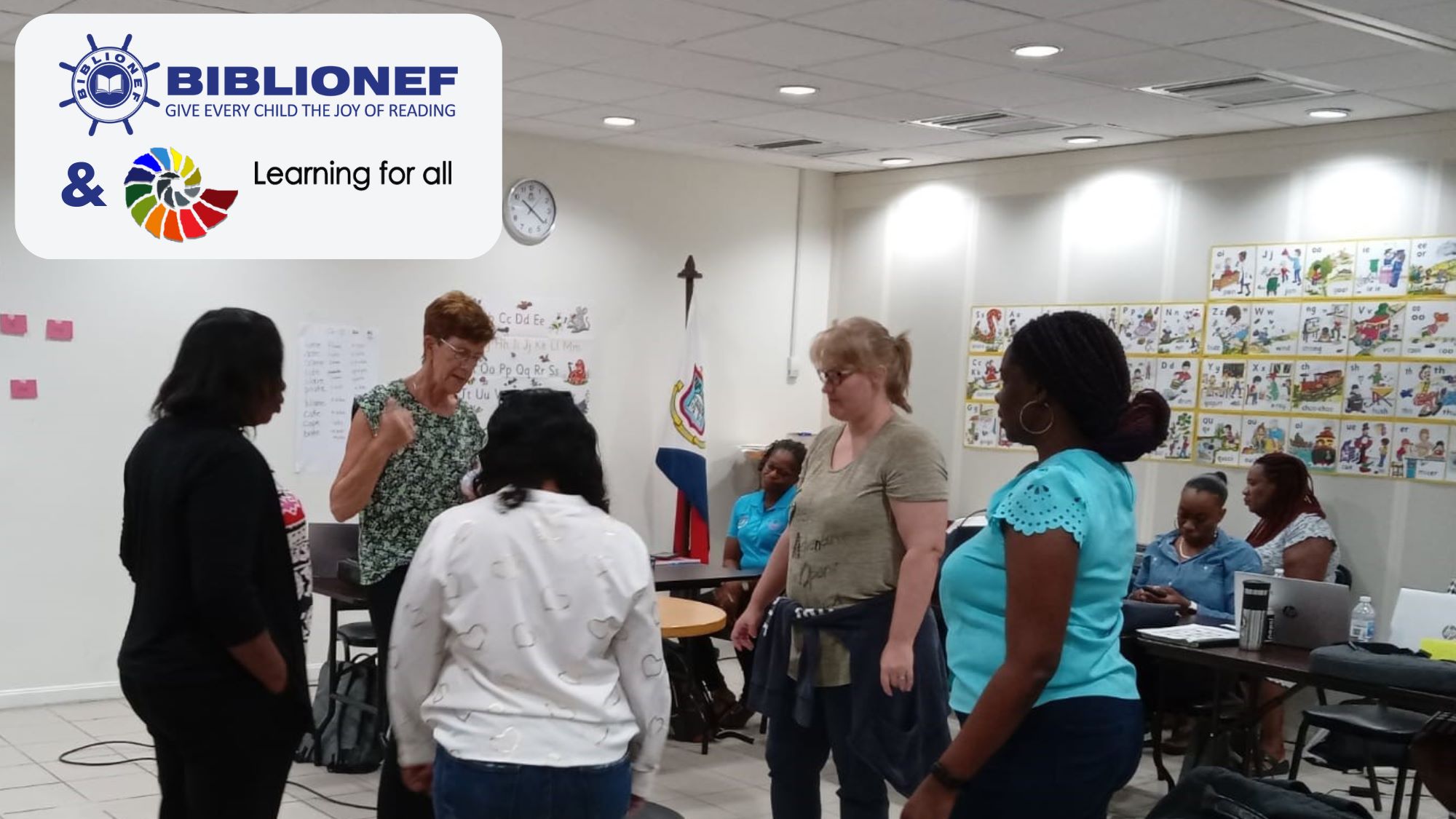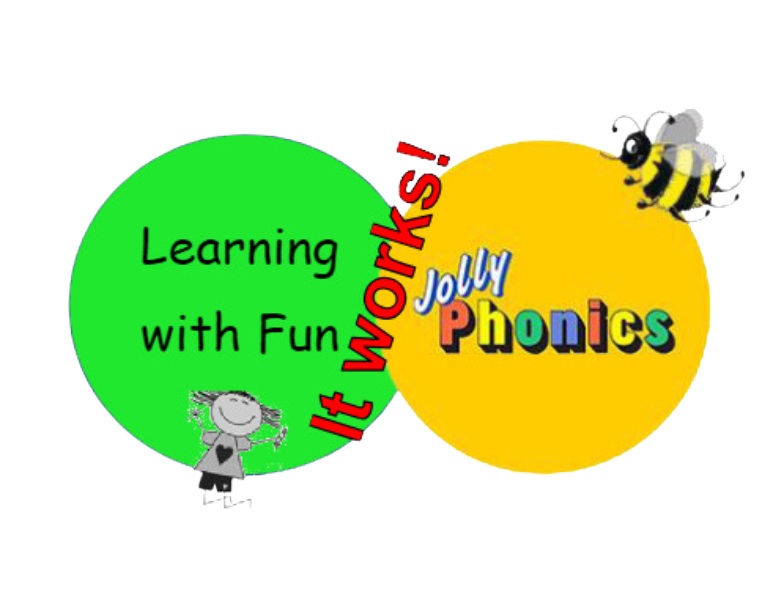Biblionef Jolly Phonics Training in collaboration with Learning for all
Biblionef started in 2023 a collaboration with Learning for all. Together we organize trainings in Jolly Phonics to help teachers teach English in a fun way.

Objective
The teachers learn how to teach children to read with Jolly Phonics. They learn the basics of the method, how it is structured and how to use it. The teachers learn to actively involve the children in teaching.
Target group
The focus is on teachers of the lower grades (K1-P2), but it is preferable that teachers of all groups follow the training. This way, children in the upper grades who cannot read (well) can be helped using the same methodology.
Description Learning to read with Jolly Phonics
Particularly in developing countries, it has been found that many children cannot read or read well when they leave school. Often, reading is taught by learning to recognise words, ‘Analytic Phonics’.
Jolly Phonics is a method based on learning to read with ‘Synthetic Phonics’, learning to read with sounds. Children develop the skills needed to encode and decode, read and write words. Practices worldwide have shown that children learn to read well and with pleasure using this method. Teachers are enthusiastic. School results go up by leaps and bounds. Being able to read is essential in everything subject taught. Schools can start using Jolly Phonics with a minimum of materials. The lessons are described very clearly.
Active learning
Children learn better when they are actively involved in education. This is also what Jolly Phonics is based on. Many schools lack materials and/or the means to purchase materials. During the training, many active forms of work are offered, using materials made from local resources as much as possible.
Over the years, many ideas for making and using these teaching materials have been collected and are offered to the teachers.
Books
Naturally, it is very important for schools to have books for children to read. Reading a lot develops skill and promotes reading pleasure. To achieve this, we are continuously publishing exciting new books to our collection.
Contents of the teacher training
The importance of learning to read well and the pleasure of reading.
The difference between Analytical Phonics, learning to recognise words, and Synthetic Phonics, learning to read with sounds.

The 5 key elements of Jolly Phonics:
- Sounds: learning to read with sounds.
- Letter formation: learning to write letters correctly.
- Blending: putting sounds together to form words.
- Identifying the sounds in words: recognising sounds in words.
- Tricky words: words that cannot be read according to the rule of merging sounds.
Learning the sounds
- Each sound is offered along with a gesture, story and song.
- The teachers learn why the sounds are offered in 7 groups and why in this order and not in alphabetical order.
Learning to read actively
- How do we learn best? (The learning pyramid by Bales)
- Active learning and teaching give more pleasure in learning and teaching and produces better results.
- How do you actively involve children in learning? This requires an active teacher. During the training, various work methods appropriate to active learning are offered.
Alternative spelling
- After the regular spelling of sounds, the Phonics Teacher’s Book shows the most common alternative ways of spelling. The same sound can be written in different ways.
Preliminary reading
- When do you start learning to read using the method?
- Before children can do this, they need to have developed a number of skills such as:
- Language development
- Vocabulary: you need words to understand learning to read.
- Meaningfulness: understanding that what you say can also be written down and read.
- Enjoyment in listening to stories and picture books.
- Looking at books yourself and creating stories to go with the pictures.
- Hearing and seeing differences and similarities.
Teaching materials
- How and when do you use which materials? Materials for classroom, groups, or individual use.
- Many materials can be self-made using local resources.
How to start
- How and when.
- Preparing lessons.
- What materials will you use and make?
Jolly Grammar and spelling
- After the initial learning to read with Jolly Phonics, the following groups can work with Jolly Grammar and Spelling. There are 6 books, one for each grade.
- All grammar and spelling rules are covered.
